If you don’t know much more about meerkats except that they’re in the movie The Lion King … Hakuna matata, or no worries! Here’s all you need to know about these sociable, altruistic, smart and hard-working animals.
Meerkats are adorable
Meerkats are small, furry, agile mammals from the mongoose family. These animals weigh from 1.5 to 4.4 pounds (700 g to 2 kg) and are about 10 to 14 inches (25 to 35 cm) tall. Their tail is quite long compared to their body, measuring 7 to 10 inches (18 to 25 cm).
These cute animals walk on four legs, although it’s common to see them standing upright and supported on their hind legs and tail, as if they were little humans. When they are sitting, all they move is their head to look here and there.
The distinctive dark markings around their eyes work like natural sunglasses, reducing glare and ensuring clear vision. Did you know meerkats are good guards?
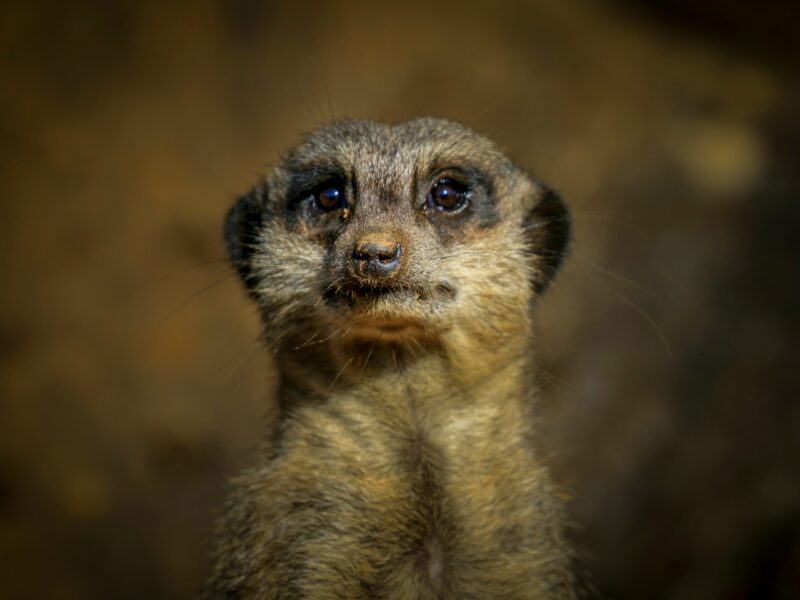
Meerkats have highly developed senses
Meerkats have highly developed senses of sight, smell and hearing.
Their ears are tiny and semicircular in shape. They are designed so that while they dig, they don’t get filled with sand. In addition, their sensitivity to sound helps them detect prey from great distances.
They also have a highly developed sense of smell that helps them track prey underground. Meerkats are mainly insectivorous. They use their paws and claws to dig and catch delicious insects, larvae, worms and small invertebrates that are hidden underground.
They have a great ability to detect insect pests. Meerkats, with their insatiable appetite for insects, play a crucial role in keeping pests at bay.
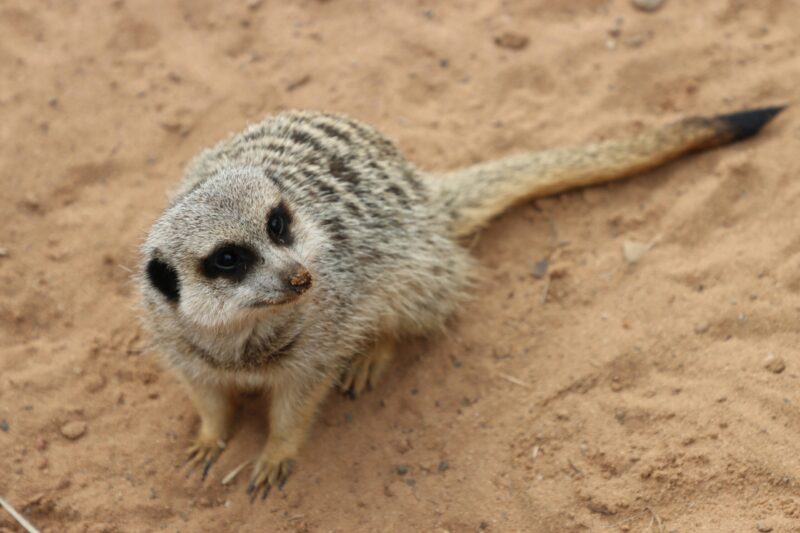
Meerkats are desert dwellers
These small animals live in southern Africa – in deserts or savannas – in areas where water is scarce. Luckily, they get plenty of liquid from the juicy insects and larvae they eat.
There is only one species of meerkat. The size and color of the fur can vary depending on the areas they inhabit, but all of them have brown or grayish tones and stripes on their backs. In addition, this striped pattern is unique, like our fingerprints. This is how they distinguish each other in the group.
Meerkats’ coloring is determined by where they live: dark brown where there is soil and grayish or light cinnamon in arid regions.
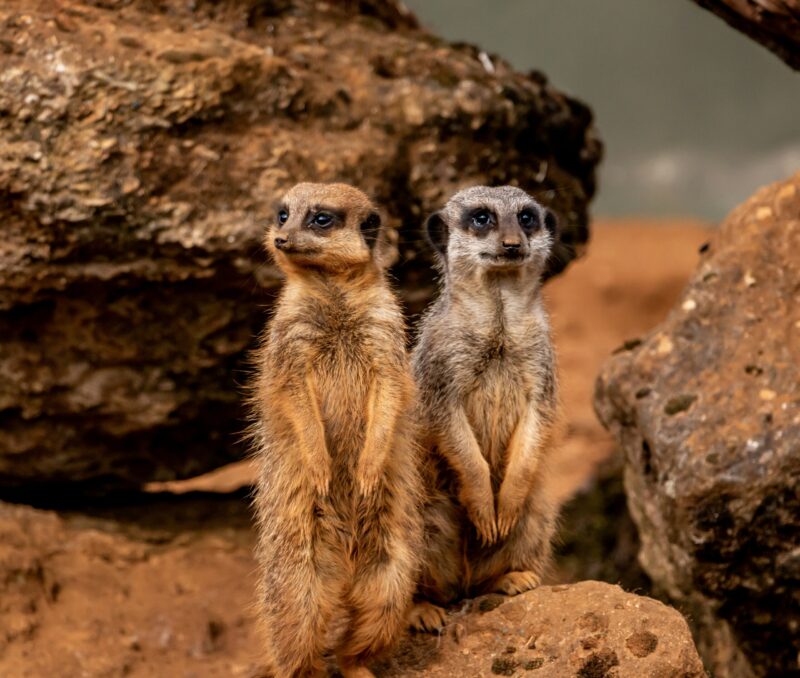
They are masters of architecture: burrows
Meerkats are intelligent and resourceful. They love to sunbathe in the mornings, but the desert is a merciless place and they need a good shelter to hide from predators. On the other hand, the desert is not always hot and sunny. In fact, there are extreme temperature swings.
These small mammals have adapted to a harsh environment that demands a lot of energy from them. They spend much of the day searching for food to ensure they have enough every day and take refuge in their burrows at night and during rainy days.
When it gets cold, they look for rocks to sunbathe on, or simply settle under the rays of the sun. These animals have a special area on their bellies with less hair, which they put in direct contact with the warm surface in order to protect themselves from the cold. This tactic allows them to absorb heat and regulate their body temperature.
Meerkats are only active and energetic if the sun is out. If one day it rains or the temperatures are too low, they opt for a day of rest inside their burrows. This behavior not only keeps them dry and warm, but it is also a smart tactic to conserve energy.
So, burrows are crucial for meerkats. They seek out firm, hard soil where they can dig and shape their impressive underground labyrinths of burrows without the roof collapsing on them. They also create several entrances so all members of the colony can quickly escape from predators.
Therefore, meerkats are masters of architecture. They have long claws on their front legs, about 0.8 inches (2 cm) long, which they use to dig into the ground and build burrows with many tunnels and galleries, as well as several entrances. These burrows make elaborate homes.
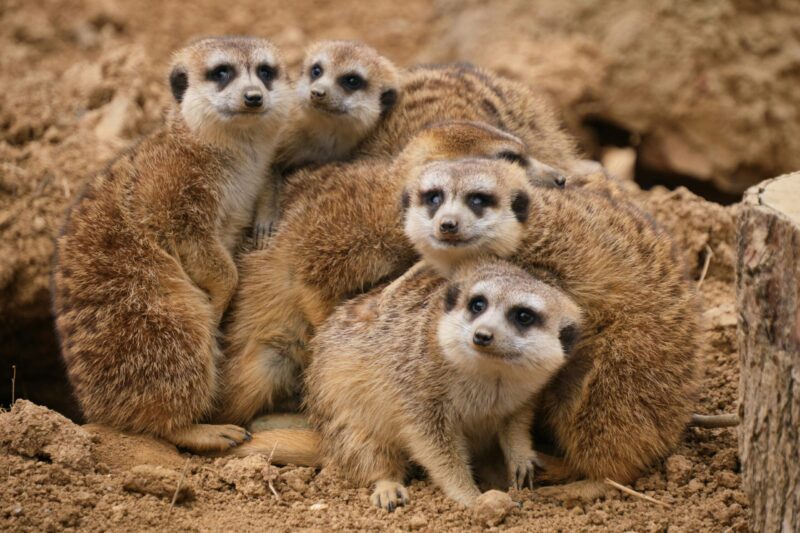
Meerkats are sociable
These cute creatures live in groups of 10 to 40 individuals. If the region they inhabit has an abundance of resources, then the groups can be larger. They are sociable and spend much of their time grooming each other.
Groups are made up of three or four family units. However, there is only one alpha pair, which reproduces and give birth to the babies. Members of the group that do not have babies help to care for and teach the cubs. Meerkat mothers have their babies inside the burrow and go out to find food to feed them.
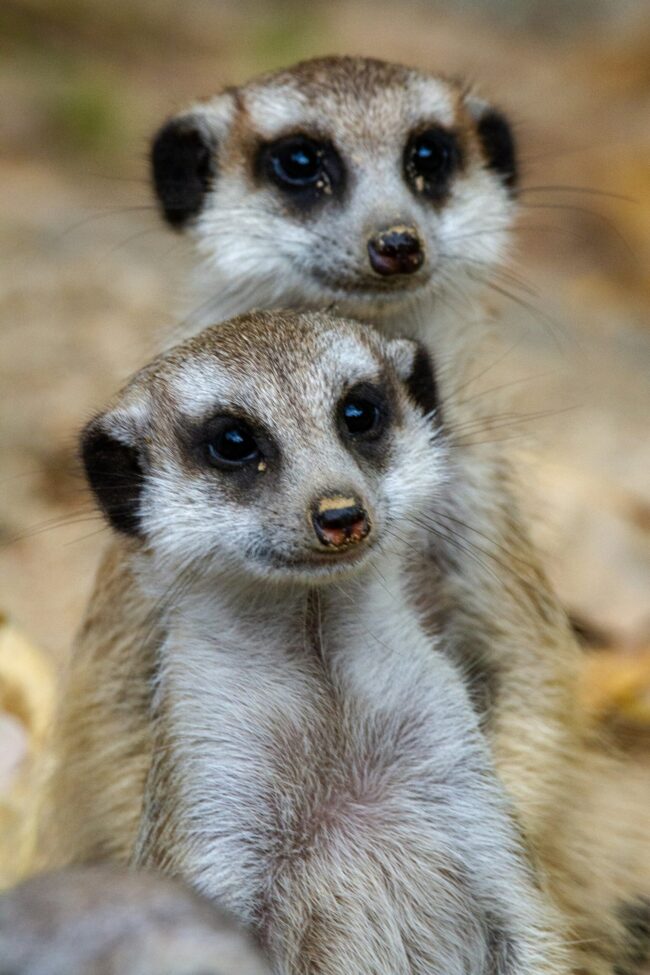
Mothers of this species are helped by other female meerkats who take care of the babies while the mother goes out in search of food. These “nannies” even produce milk to feed the babies in case the mother is unable to. Individuals that do not reproduce also care for adult and sick individuals. As you can see, they are extremely altruistic animals.
They can reproduce throughout the year if conditions are favorable. Gestation lasts about three months, and they have two to five pups at a time. They can have pups up to three times a year. The little ones are born blind and without their fur.
Meerkats can live up to 10 years in the wild, although in captivity they can live much longer. They are intelligent animals that use various strategies to survive.
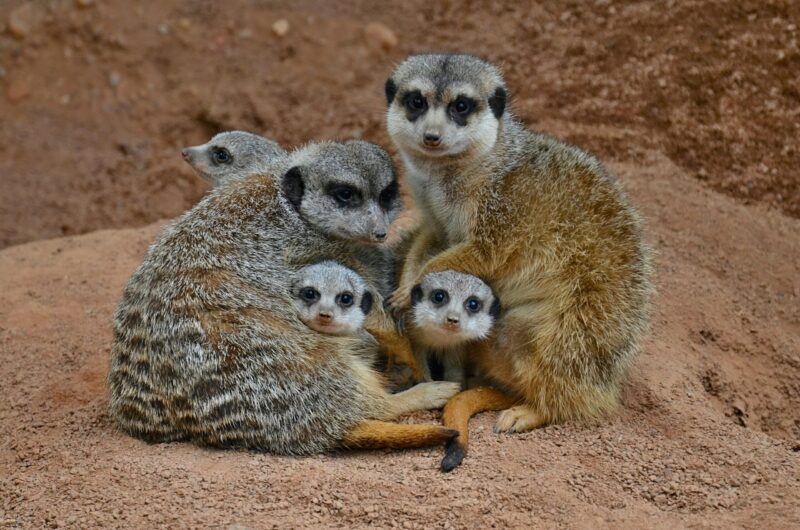
Unmatched ingenuity
Meerkats are a diurnal species. The first thing they do when they wake up in the morning is to leave the burrow to sunbathe, look for food, look after their young or stand guard.
Meerkats take turns watching out for predators and threats. There is always one meerkat that stands high and upright, thanks to its hind legs and tail. This gives it a good vantage point to watch out for approaching predators. This responsibility is shared, as it is a rotating task that everyone takes on because they all participate in looking after their clan.
Meerkats have developed a fascinating repertoire of sounds they use to keep their group safe and well organized. With a squeak or a growl, they can warn others about any threat or decide who does what in the group.
When there is danger, they emit a series of alarm calls to warn the rest, so they can flee to the burrow, where they remain safe.
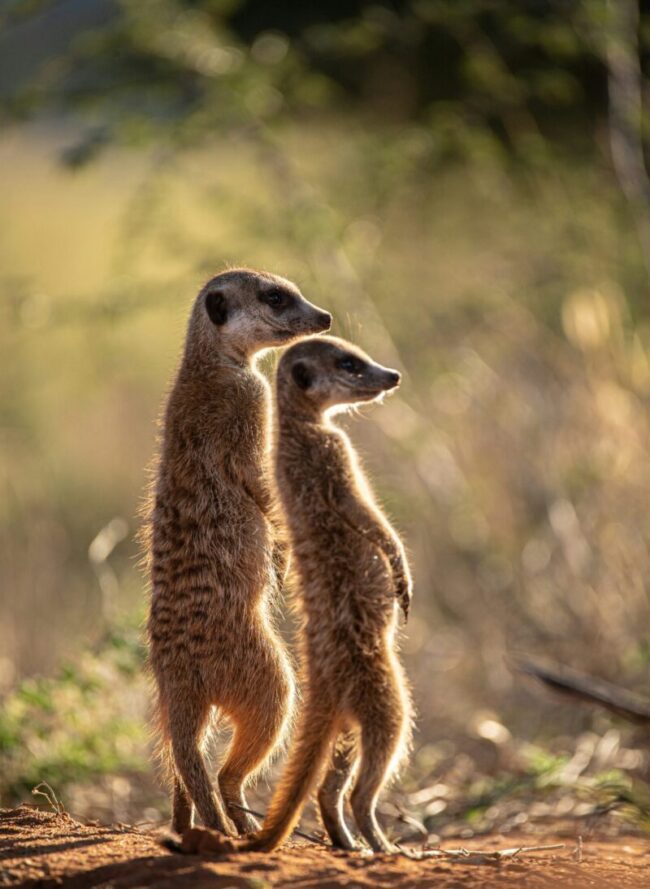
Meerkats are immune to some venoms
Because they are so small, they are natural prey for many species found both in the air and on the ground. Some birds, such as hawks or eagles, can see them from miles away. And snakes and jackals attack them from the ground.
For this reason, meerkats make sure there is always a guard to warn the rest of the group of danger. When some time passes after the warning, the sentinels are the first to go out to see if the predator has left, in which case they alert the others to continue looking for food.
Because they are intelligent animals, they have strategies. When they feel threatened and cannot escape, meerkats group together, stand on their hind legs and raise their fur to make themselves look bigger and more threatening to predators.
These mammals are impressive as they also hunt and feed on larger animals such as birds, lizards, small mammals, small snakes and arachnids, especially scorpions.
They are immune to some venoms, such as that of scorpions, spiders and snakes. If a snake bites them and injects its venom, they feel ill for a few hours but then recover. What a fascinating species!
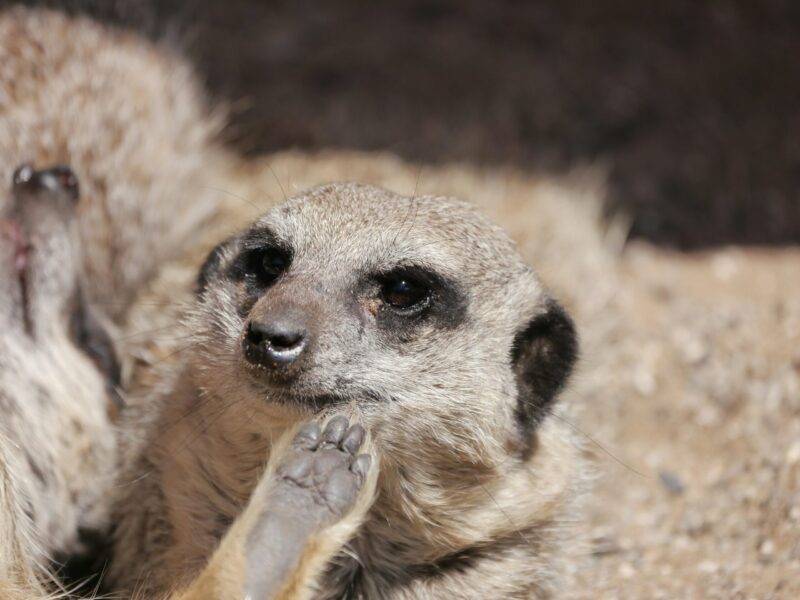
Lovely meerkat images
As meerkats love to be outside and sunbathe, it is easy to photograph them. They are so photogenic! Enjoy these pics.

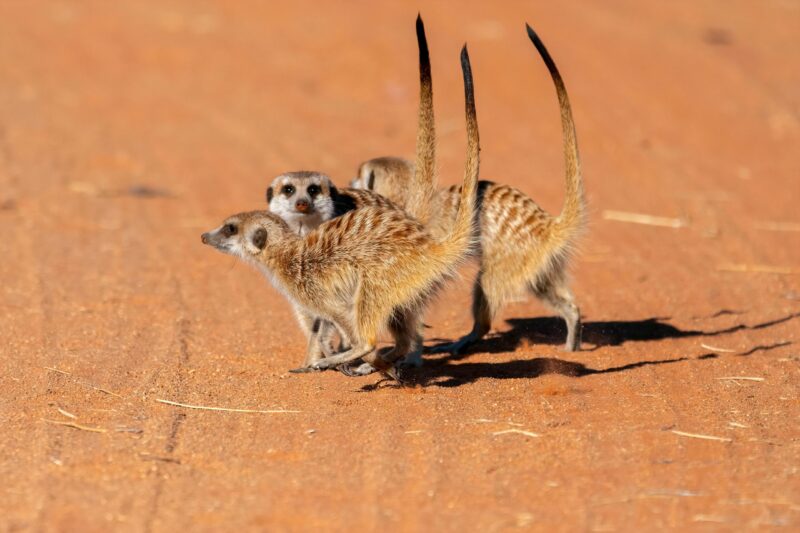

More beautiful images


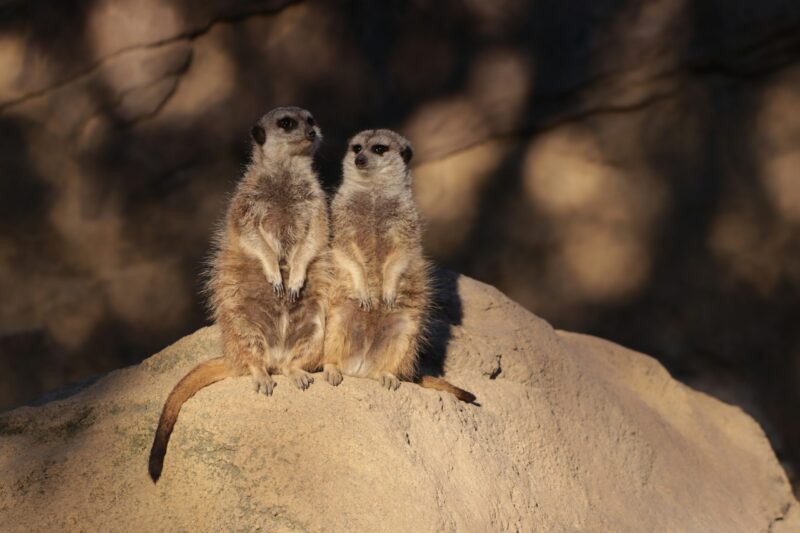
Bottom line: Meerkats are small, furry, adorable mammals you can’t help but love. They live in groups and take care of each other, especially the cubs and the sick, old members. Aww!











